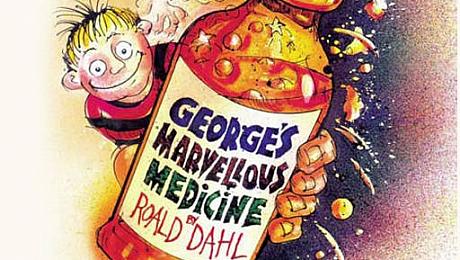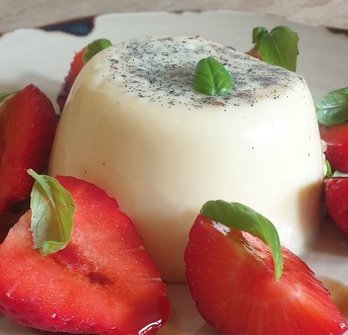The notion of witches has always fascinated me. It began in childhood when I read books about witches such as Meg and Mog. As I got older the Worst Witch books enthralled me and I spent hours running down our hillside street pretending to fly on the garden broom.
 At school I was told about the Pendle Witches who were not only real but were executed for their beliefs. I began to search out stories about their lives and the folklore associated with witches all over Europe. I think my obsession stemmed from my love of history which ordinary woman were largely absent from. For me, the story of witchcraft glimpsed a female world only hinted at in other books. I quickly realised most witchcraft stories were told through a heavy cloak of ignorance and hysteria. I recognised that much of it was hearsay and many of the ‘witches’ were most likely ‘cunning folk’ with a knowledge of medicinal herbs, and perhaps more than a toe dipped into pre-Christian religions.
At school I was told about the Pendle Witches who were not only real but were executed for their beliefs. I began to search out stories about their lives and the folklore associated with witches all over Europe. I think my obsession stemmed from my love of history which ordinary woman were largely absent from. For me, the story of witchcraft glimpsed a female world only hinted at in other books. I quickly realised most witchcraft stories were told through a heavy cloak of ignorance and hysteria. I recognised that much of it was hearsay and many of the ‘witches’ were most likely ‘cunning folk’ with a knowledge of medicinal herbs, and perhaps more than a toe dipped into pre-Christian religions.
The many accounts of witches flying have always intrigued me. So persistent was this concept that we associate broomsticks with witches to this day. This is now assimilated into popular culture and has become an accepted Halloween motif. Halloween, once known as All Hallows Eve, was originally a pre-Christian festival called Samhain. It was a time to celebrate ancestors and was believed to be a point in the year when the veil between the living and the dead was at its most fragile.
 Besom brooms, the type we most associate with witches, were traditionally made from hazel rods and birch twigs – both of these trees have magical associations. Hazel had ancient links to the pre-Christian faiths and was believed to have strong protective powers and divining magic. Birch was also a protective tree and was believed to be able to repel evil spirits and enchantments. Combined they clearly had some symbolic importance to those who followed ‘the old ways’.
Besom brooms, the type we most associate with witches, were traditionally made from hazel rods and birch twigs – both of these trees have magical associations. Hazel had ancient links to the pre-Christian faiths and was believed to have strong protective powers and divining magic. Birch was also a protective tree and was believed to be able to repel evil spirits and enchantments. Combined they clearly had some symbolic importance to those who followed ‘the old ways’.
The earliest record of a witch and her broom was in 1324 when Lady Alice Kyteler was accused of witchcraft. It was discovered that: ‘in rifleing the closet of the ladie, they found a Pipe of ointment, wherewith she greased a staffe, upon which she ambled and galloped through thick and thin, when and in what manner she listed’.
Many reports of women flying on brooms followed over the subsequent centuries. In the 1692 Salem Witch trials one such account claimed ‘one evening she walkt out about a Mile from her own House, and there came riding towards her three persons upon three broom-staves, born up about a yard and an half from the ground’.
 Flying was not only reported by witnesses but was often admitted by the ‘witches’ themselves throughout the various witch trials which took place between the 15th and 18th centuries. Clearly this could have been coerced out of the accused but in some cases it seems highly likely that the women truly believed they had flown. Many of these women appear to have attended gatherings to celebrate the old religion and allegedly prepared themselves for a night of ritual by smearing their bodies with all manner of concoctions while muttering magical incantations.
Flying was not only reported by witnesses but was often admitted by the ‘witches’ themselves throughout the various witch trials which took place between the 15th and 18th centuries. Clearly this could have been coerced out of the accused but in some cases it seems highly likely that the women truly believed they had flown. Many of these women appear to have attended gatherings to celebrate the old religion and allegedly prepared themselves for a night of ritual by smearing their bodies with all manner of concoctions while muttering magical incantations.
During my years of herbal research I have stumbled over various mentions of ‘flying ointment’, including several recipes. Johannes Weirs, writing in the 1500s, lists the ingredients of one such ointment as consisting of ‘poison hemlock, poplar leaves, juice of wolfsbane (Aconite) and soot’, with another popular ingredient being henbane. You don’t have to be a herbalist to know hemlock, aconite and henbane are deadly poisons while also being highly hallucinogenic when applied to the skin. Less dangerous plants were sometimes used to achieve a similar altered state such as mugwort and its cousin wormwood, now used to make absinthe.
 Other more bizarre flying ointment ingredients involved toads, which when stressed secrete a poisonous substance from their skin. This milky substance contains bufotenine (hallucinogen) along with some powerful heart-stopping chemicals. If ingested this would cause a painful death but an extraction diluted and added to the skin would be likely to cause hallucinations and possibly seizures.
Other more bizarre flying ointment ingredients involved toads, which when stressed secrete a poisonous substance from their skin. This milky substance contains bufotenine (hallucinogen) along with some powerful heart-stopping chemicals. If ingested this would cause a painful death but an extraction diluted and added to the skin would be likely to cause hallucinations and possibly seizures.
Apparently, witches extracted the hallucinogenic element by dropping the toad into a warmed cauldron of hog’s lard. The lid was placed over to ‘worry’ the toad and after a few minutes the live animal was scooped out of the cooling fat and thrown outside. The contents of the pan were then stirred through and poured into pots to be used on Witches Sabbath.
All of these ointment recipes were alleged to induce a sense of euphoria, a state of super-consciousness and consequently a sensation of flying. So this Halloween as you trick or treat your way round the neighbourhood it might be worth keeping an eye on that skyline because you never know what you might see…
Happy Halloween.
 DISCLAIMER: All the herbs and substances in this article are highly dangerous and potentially fatal. The contents of this piece are for information and interest only. None of the recipes should be attempted under any circumstances.
DISCLAIMER: All the herbs and substances in this article are highly dangerous and potentially fatal. The contents of this piece are for information and interest only. None of the recipes should be attempted under any circumstances.
- No toads were harmed in the writing of this article











